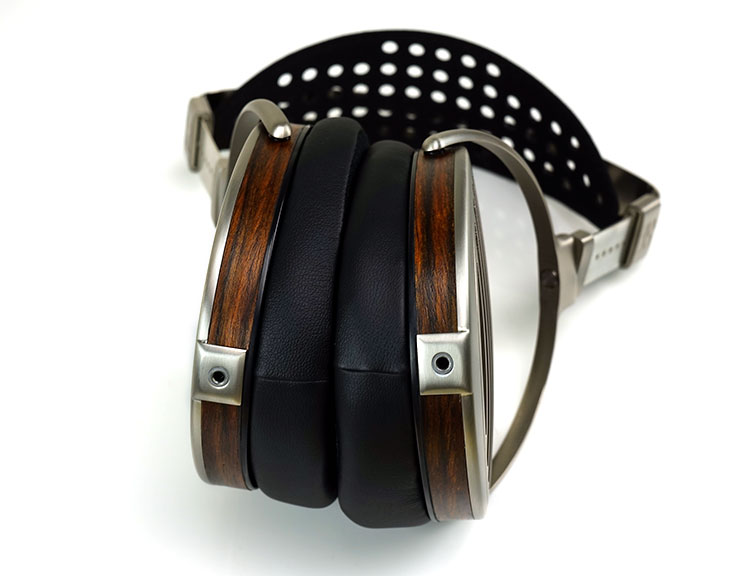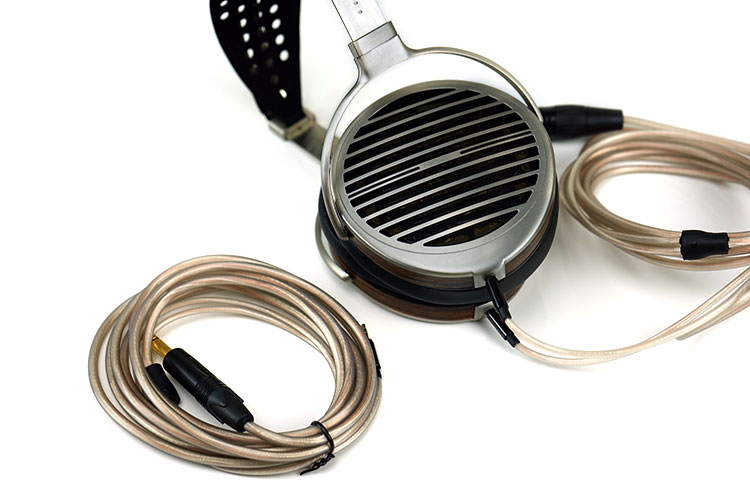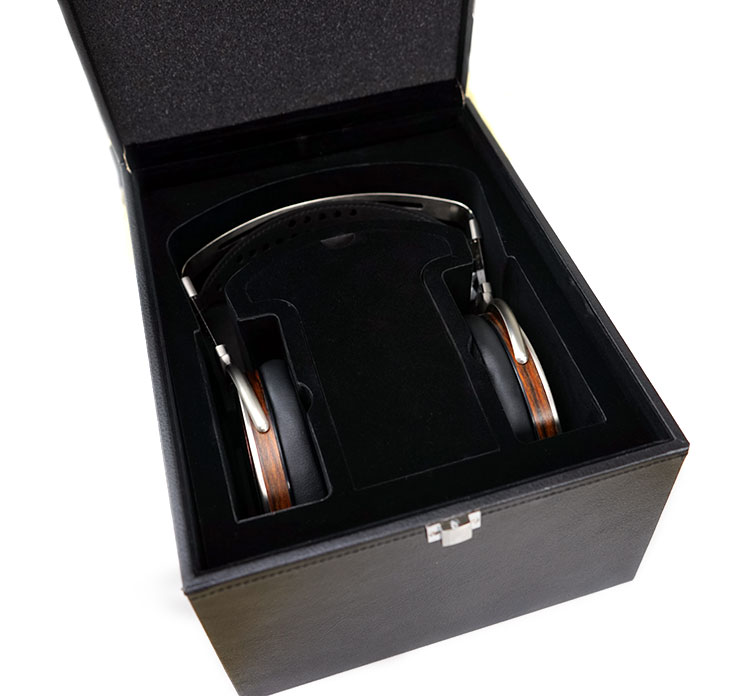In this feature, Marcus reviews the Hifiman Susvara, which is the company’s top-of-the-line open-back planar magnetic headphones priced at $6000.
Disclaimer: This sample was sent to me in exchange for my honest opinion. Headfonics is an independent website with no affiliate links or status. I thank the team at HIFIMAN for their support.
To read more about the HIFIMAN products we have previously reviewed on Headfonics click here.
Note, that this post follows our current scoring guidelines which you can read in more detail here.
The Hifiman Susvara is a headphone that has been with me longer than any product before I decided to write the review. And for good reason.
This is a $6000 headphone and one of the most expensive headphones on the market. Higher tier even than the Audeze LCD-4, Focal Utopia at $4000, and their own HE1000 V2 at $2999.
It also represents the best of what Hifiman can do with planar technology thus far and rightly so it is their flagship headphone. To give it a few days or weeks spin across some great amps would be a great disservice and perhaps end up being misleading.
Patience
As such I have spent something like 5 months with the Susvara hooked to solid-state and tube amps that are both powerful and nuanced in performance.
It is also likely existing Susvara owners and those interested will have their own setup beyond what I can comment on. My apologies in advance if my amp pairing does not float your boat.
Having championed the HE1000 V2, albeit, with a few personal preference reservations, I have to say the Susvara utterly nails what I want in a TOTL headphone. Thankfully, it is also one of the occasions where technical excellence meets personal preference. A convergence of pleasure and respect if you will.
What Is The Pitch?
The pitch is not the price, albeit the price does position it as Summit-fi in terms of regular non-system-based headphones. You can call out the HE-1 and even Hifiman’s own Shangri-La as truly summit gear but for me, the Susvara is what I would call the summit of what is possibly attainable.
It sits in the same rarified air as the Audeze LCD-4, Abyss AB-1266 Phi, and laterally will provide a big distraction to potential end-game Stax shoppers.
Nanotechnology
The pitch is the diaphragm nanotechnology combined with a new magnet design used to build the Susvara drivers. In short, it can be viewed as a marriage of legacy and continual development of their recent driver technology.
Legacy of the HE6
Back in the early stages of development, the concept had always been to bring a true successor to the legendary HE6 which first came out around 2010. The advance PR called it the HE Edition 6 before it was renamed and evoked a sort of homage to the HE6 legacy combined with the direction of the HE1000 series.
If you pay careful attention to their website PR you will see a tree outlining the development of Hifiman’s planar technology with the HE1000 coming in from one angle and the HE6 from another. The Susvara draws a little from the HE6 legacy with a return to a gold-coated conductive diaphragm.
Building on the HE1000
It also pulls from the goal of the HE1000 series in producing a thin nanometer-thickness diaphragm with nanotechnology at the heart of that design. Hifiman has taken the original process behind the HE1000 design and enhanced it to a nanometer-grade level at less than one millionth of a meter.
They have also taken the Window Shade design of the HE1000 series and tweaked it further to not only avoid distortions and unwanted vibration but also to enhance the ability to eliminate resonant frequencies. All this whilst still retaining the goal to produce as open a sound as possible.
Stealth Magnets
The one interesting thing that the HE6, HE1000 series, and the Susvara have in common is that they are both double-sided magnet designs. Though technically double-sided the HE6 was very inefficient and something which Fang sought to remedy in subsequent headphones right up to the HE1000’s asymmetrical magnet design which is a lot more efficient.
They still scale with great amps but the HE1000 successfully avoided sounding bad with weaker amps, unlike the HE6. The Susvara goes in a slightly different direction again.
The Susvara’s big magnet pitch is the use of what Hifiman calls ‘Stealth Magnets’. These new magnets are not asymmetrical in alignment.
Rather, they have a different physical shape and composition to allow sound waves to pass through from one side to another without creating any “interferences” such as wave diffraction turbulence and lowering distortion in the process. In a way they are being touted as being almost invisible acoustically, hence the term stealth.
Design
Form Factor
The form factor of the Susvara is fundamentally the HE1000 series functionality with the more traditional circular design of the HE6 for the cups. Where it draws from their previous TOTL is the headband and gimbal structure as well as the wood veneer and metal finish of the cups.
Weight
It is slightly heavier than the HE1000, by 30g in total at 450g. That is a fairly negligible weight difference for a full-size headphone in all honesty and the Susvara does feel very light. However, the Susvara’s shorter cup height delivers a more balanced and slightly more compact feel in the hand than the HE1000 V2.
Materials
The finishing materials are quite similar to the HE1000 though of differing colors. There is still the same mix of sturdy but flexible metal alloy for the arching headband.
It also uses the same perforated suede pressure balance strap just underneath the headband arch though in black color. The wood veneer also drops down a tone or two to complement the black strap with a much darker grain.
 Gimbals
Gimbals
The gimbal design is quite flexible and similar to the HE1000 V2. You can fold the Susvara flat and swivel the cups inside the gimbal to face down should you wish.
If you look closely the stem of the Susvara gimbal connecting the arch of the headband has more metal reinforcement just as it curves up into the slider. Now I never had any issue with my older HE1000 V2 gimbals but it does seem to me that this is an area that has been identified as a weak area and has thus been beefed up a little.
Cups
The Susvara cups are also slightly shallower than the HE1000 V2. The V2 cup depth was already reduced but the Susvara goes even further with an approximately 2-3mm depth reduction (18mm vs 15mm).
Looking at it closely I would say about 1-2mm has been shaved off the veneer panel side. There is also a slightly thinner rubber ring at the back for holding the pads. The metal ring at the front curves a bit better to the side which in turn lowers the depth a touch.
Grills
The Susvara also uses the window shade design for the grills but the finish is above the standard set by the HE1000 series. The grill gaps are a little closer on the Susvara and place a Hifiman moniker dead center whereas the HE1000 has none.
The seam between the front grill ring and the side metal finish on the Susvara is also tighter and much neater. It looks much more seamless than before.
Headband System
The headband system is the same as the previous system from the HE1000 series. I prefer this system over the older HE6 design. The HE6 is a classic single headband design but the weight of the cups always dragged it downwards and I never felt I had control, even on the lowest rung.
V2 Legacy
Note this is the HE1000 V2 headband design and not the V1. That is important because the V2 brought in some substantial design tweaks that improved the fit tremendously.
Hifiman has flattened and widened the arch slightly and added a few more notches to the headband adjuster. The slightly wider and flatter structure creates a better level of rigidity over the entire frame.
Clamp
Like the V2 the clamp in the Susvara is sold and the pressure distribution is excellent. The shorter length combined with the increase in notch adjustment holes also allows the headband leather strap to take a load off the cup downward pressure which in turn allows the sideways clamping pressure to become more effective.
Combined with the weight reduction and more comfortable pad material it suddenly becomes an even more comfortable and secure wearing experience than before.
Pads
Wedged
The Susvara pads are more rounded than the HE1000 V2 and have a slightly different finish to them. The new pads are marginally thinner than the Ve pads but still retain the wider angle ‘wedge type’ form factor.
The pad materials are also a touch softer than before and do not have those creased patterns from the V2.
Materials
The Susvara continues to use the V2 inner surface polyester-type material on the new pads. However, the new slightly thinner, and more refined pad pleather will notice that the stitching area beside the polyester materials has fewer ridges and bumps.
One of the areas I mentioned on the comfort levels of the V2 was that noticeable transition from pleather to polyester on the ear. It was comfortable but not outstanding. Hifiman seems to have addressed that with the new outer material and stitch finish on the Susvara.
Hifiman claims that the polyester material does have audible improvements over the original V1 velour with an enhanced level of transparency in the presentation. They remain detachable though so if they are not to your liking you can swap them out for older pads are modded pads depending on your preferences.
Comfort Levels
The rounded and slightly shorter height in the new Susvara cups does make a big difference over the V2. Previously the tall length of the V2 meant you had a little wiggle room in terms of where your ears are positioned inside the cups.
Often, I found my ears gravitating more to the top of the cup leaving a lot of space at the bottom. This can subtly change the tonal balance of the V2 and at times it can also pull a little down on the ear or push them forward.
With the Susvara the pads have a better spatial distribution inside with less wiggle room meaning my ear position will be more consistent in terms of placement.
The shorter cups also seem to gel better with the suede strap pressure distribution. Not only do I get the better V2 style clamping but I also get less movement on the top and rear of my ears with the wider space.
Cables
Materials
The Susvara uses the same cables as the HE1000 V2. You get a balanced XLR termination and single-ended terminated cable in the box. This is a three-core, crystalline copper with silver-plated wire encased in a rubberized sheath.
Memory retention is minimal with zero tangling and they are fairly durable but light and breezy rather than stiff and weighty like some aftermarket designs. However, I am not a huge fan of the finish with that weird rubber IV tube finish, and doesn’t gel well stylistically with the premium label of the Susvara.
Aftermarket suggestions
It is a worthy upgrade on the original V1 cable performance but for the additional price of the Susvara, I would prefer something a bit more substantial. I also did some cable testing with the HE1000 V2 and some other aftermarket cables earlier in the year and found them to be a little brighter and peakier than some excellent SPC and copper aftermarket cables.
Right now I am using an Audio Art HPX-1. This is an affordable but slightly heavier-duty twin 28 AWG OCC Copper. There are conductors in each cable insulated with a PE dielectric and a braided silver-plated OFHC copper shield.
I tend to find this combination or the ALO Audio Reference 8 Salty Pepper to have better dynamics, a bit more body, and a smoother top end.
Accessories & Packaging
The Susvara follows a common theme first established with the HE400i/He560 packaging and continued with the HE1000 series.
This time, in keeping with its generally darker aesthetic, the hinged display box is black leather-trimmed as opposed to tan or brown. The internals are the same contoured cloth finished cutaway with the cables nestled inside a small stowaway at the top layer.
Accessories
Aside from the cables, you will also receive one of those excellent hardcover book-type manuals Hifiman uses for the HE1000 series. I do encourage you to read it. Like the RE2000 manual, there is plenty of information on the technology, frequency response, and technical specifications for the Susvara. It is one of the nicer manuals out there for any headphones I can think of.
What is missing? Well, I am told that the standard production line Susvara has a soft cloth travel pouch to protect from the elements a little. Sadly, I can’t show you that, it did not come with the early review units, of which this is one of them.
I also still think a small cleaning cloth would be ideal just to buff up the metal gimbals and headband now and then.
Click on Page 2 below for Sound Impressions & Matching




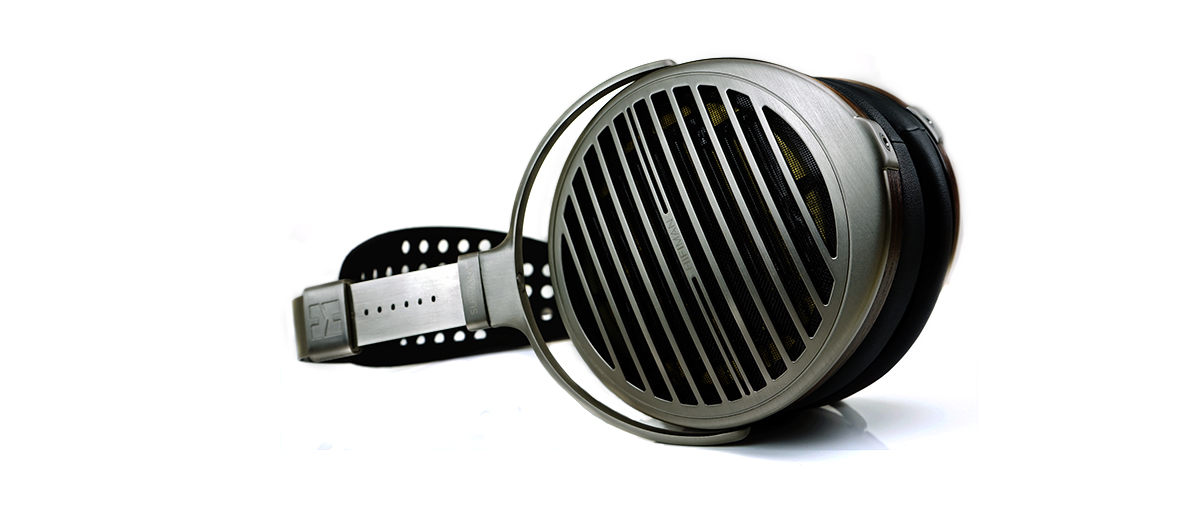

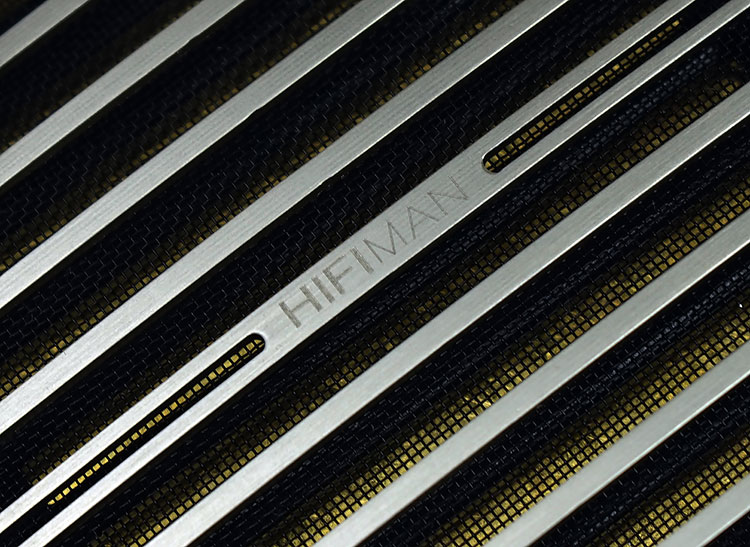
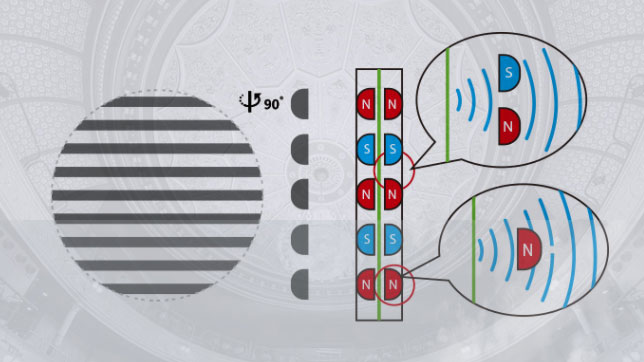
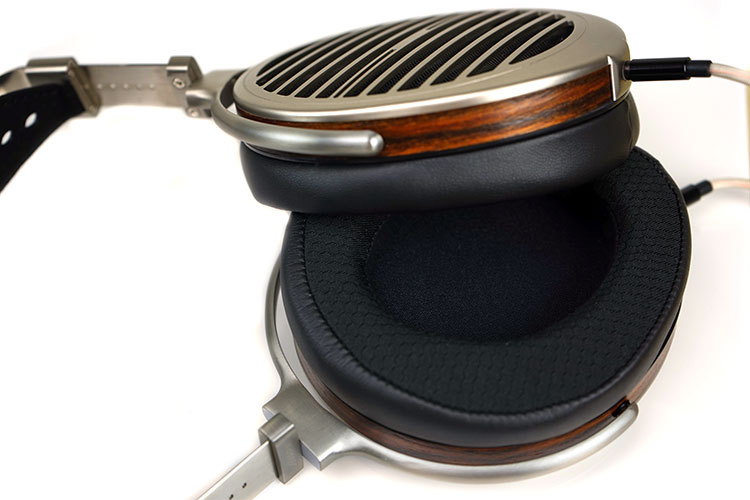 Gimbals
Gimbals
